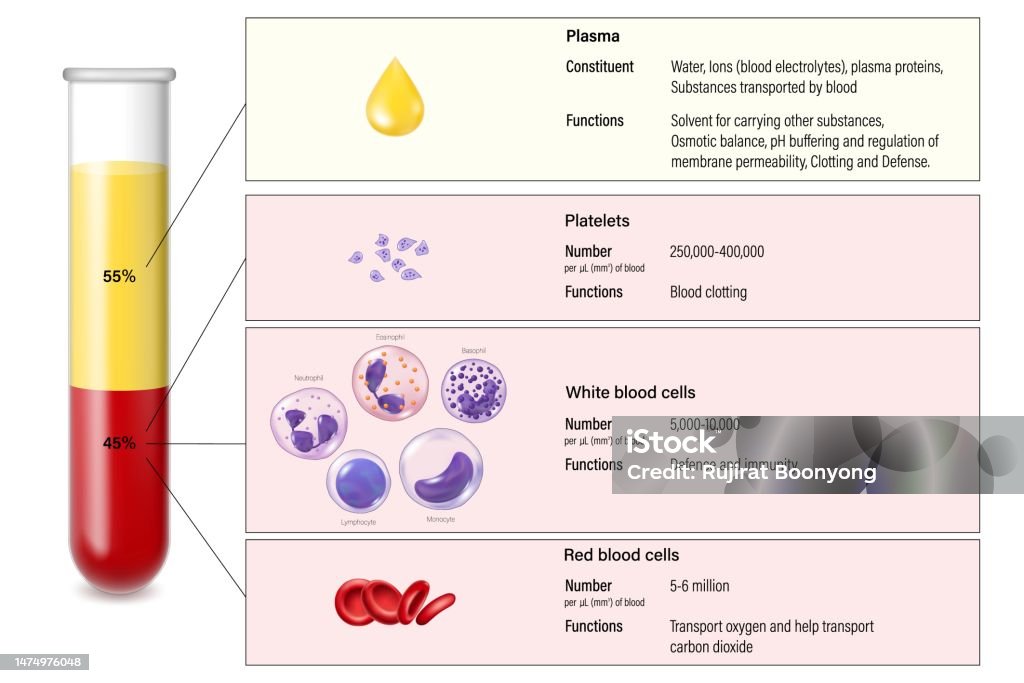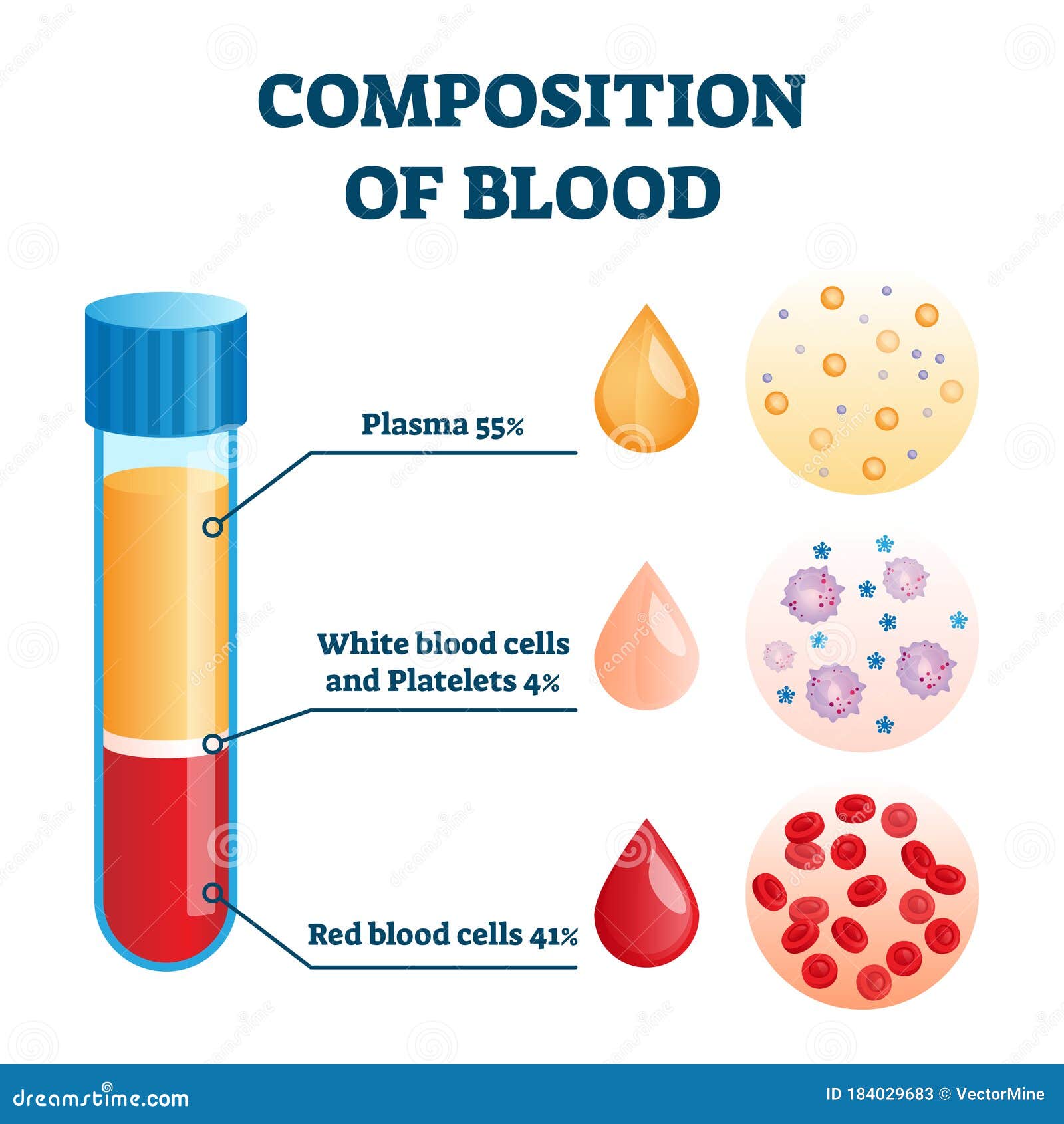Blood Plasma Composition Biology Diagrams A unit of donated fresh plasma. Blood plasma is a light amber-colored liquid component of blood in which blood cells are absent, but which contains proteins and other constituents of whole blood in suspension.It makes up about 55% of the body's total blood volume. [1] It is the intravascular part of extracellular fluid (all body fluid outside cells). It is mostly water (up to 95% by volume

Plasma, also known as blood plasma, appears light-yellowish or straw-colored. It serves as the liquid base for whole blood. Whole blood minus erythrocytes (RBCs), leukocytes (WBCs), and thrombocytes (platelets) make up the plasma. Serum, sometimes mistakenly considered synonymous with plasma, consists of plasma without fibrinogen. Plasma contains 91% to 92% of water and 8% to 9% of solids. It

Blood plasma Biology Diagrams
3. Blood protects against excessive blood loss through the clotting mechanism, and from infection through the immune system. II. Blood Plasma (pp. 648-649; Table 17.1) A. Blood plasma consists of mostly water (90%), and solutes including nutrients, gases, hormones, wastes, products of cell activity, ions, and proteins. Composition. The blood plasma is the liquid component of the blood. It's a straw-colored sticky fluid that constitutes 55% of blood's volume. Ninety percent of the blood plasma is composed of water, while the remaining 10% is made up of molecules, such as nutrients, salts, respiratory gases, hormones and plasma proteins (Reece et al., 2014). Understanding its composition and formation provides insights into how our bodies maintain homeostasis and respond to various physiological challenges. This overview will delve into the components of blood, including plasma, red blood cells, white blood cells, and platelets, along with the process of hematopoiesis. Plasma Components

Figure 18.2 Composition of Blood The cellular elements of blood include a vast number of erythrocytes and comparatively fewer leukocytes and platelets. Plasma is the fluid in which the formed elements are suspended. A sample of blood spun in a centrifuge reveals that plasma is the lightest component. Plasma is derived when all the blood cells—red blood cells (erythrocytes), white blood cells (leukocytes), and platelets (thrombocytes)—are separated from whole blood. The remaining straw-coloured fluid is 90-92 percent water, but it contains critical solutes necessary for sustaining health and life. Blood Plasma Composition. Blood plasma is composed of mostly water (about 90%), and the rest of the plasma consists of proteins and other solutes, such as nutrients (glucose), electrolytes (sodium ions), gases (oxygen and carbon dioxide), and wastes (urea). Plasma and plasma proteins
